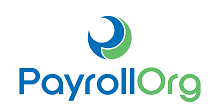How to Keep Your Company Garnishment Compliant

When I was pregnant with my second daughter 20 years ago, I interviewed with a growing athletic product distributor for a temporary assignment in their payroll office in Norfolk. After introductions were made, the first question the interviewer asked was, “What do you know about garnishments?” I remember thinking amusingly, “Wow, what an opening question!” I went on to elaborate about what I knew in my short time in the payroll industry, which surprisingly was more than enough to get me the job.
On my first day, I discovered why my interviewer asked that question. To my astonishment, the previous payroll clerk, while she was eager to do a good job, wasn’t familiar with garnishments. The company received court-ordered garnishments each week, and my predecessor thought it was best to file them in a drawer. The company was now being served daily motions of show cause and were not only liable for the wages of employees that were not collected by the filed garnishment summons of the court but costly court penalties for noncompliance, too.
Defining Wage Garnishments
For those who are new to the payroll industry, a garnishment—according to the Oxford Dictionary—is “a court order directing that money or property of a third party (usually wages paid by an employer) be seized to satisfy a debt owed by a debtor to a plaintiff creditor.” However, a company or organization’s payroll office is more likely to be served a “wage garnishment,” which is “a legal procedure in which a person's earnings are required by court order to be withheld by an employer for the payment of a debt,” according to the DOL.
It’s also important to note that government agencies, such as the IRS, do not have to obtain a court order to garnish an employee’s wages. These federal wage garnishments are often referred to as, “levies.” The word, “garnishee” is derived from the Latin word “garner,” which means “to warn the third party.” Why is your company being warned by a court to withhold the wages of its employees to satisfy a debt? Employers are often considered the garnishee—the holders of an employee’s wages until disbursement. The garnishment summons is a legal document warning the employer to hold and eventually turn over a portion of the wages of a specified employee in its possession to the requesting court or government agency.
Tips for Garnishment Compliance
Once a creditor determines or believes that your company may be in possession of wages of a specified debtor, you may be served with a garnishment summons by your local sheriff’s office, a process server, or receive it by certified mail with a return receipt requested. While the COVID-19 pandemic has presented many challenges and delays to this process, our responsibility to comply with this summons hasn’t changed despite the pandemic. Payroll professionals are generally considered a “registered agent” of your organization and, once served, the server will often ask for your name and title to further prove to the court that a copy of the summons has been delivered. There are a few tips to ensure you remain compliant if your office receives a summons. These tips include the following:
- Review carefully the accepted document from servers. An employer cannot refuse to garnish wages. The garnishment summons or levy must identify the following:
- The name and address of the debtor
- The amount of the debt that is unpaid or due to the court
- The date the judgment was entered against the debtor
- A statement of the obligation of the garnishee (the employer)
If the information listed above is consistent with your employee data, then the summons will be deemed by the court to contain “information sufficient to enable the garnishee to reasonably identify the judgment debtor.” A payroll professional who declines acceptance of a summons that has sufficient information opens the company up to penalty and possible liability of that debt needlessly.
- Know the wages subject to garnishment. Hourly wages, salaries, commissions, bonuses, allowances, and incentives are all subject to a wage garnishment. Tips, over the tip credit, however, are not. Knowing this, ensures on-cycle and off-cycle wages are treated appropriately.
- Know how much to withhold. Title III of the Consumer Credit Protection Act (CCPA) directs an employer on how much they can withhold from an employee’s wages. Other information to know includes:
- The wage amount after required deductions (i.e., income taxes) is referred to as an employee’s “disposable earnings”
- The maximum weekly deduction is determined as either 25% of the disposable earnings, or the difference in an employee’s disposable earnings and 30 times the federal minimum wage rate, whichever is the least. Weekly earnings that total $217.50 or less cannot be garnished.
- Ensure you are regularly calculating and withholding the correct amount on each pay cycle or payment.
- Notify the employee and withhold immediately if a summons applies to the current pay period when the summons is served and all future pay periods that conclude with either a specified date or a document of release. While employees may not understand the urgency of such a document, you, to avoid your company’s further legal involvement, must act promptly.
- Finally, answer and remit wages and/or relevant information to the court. If you are served with a garnishment summons, you are required by law to file an answer to that summons. Your company has the earlier of seven days after the end of the employee’s current pay period or 30 days after the garnishment summons is received to file a response to the court.
Many garnishments summons contain and require a “garnishee’s answer” or an “answer affidavit to list why the garnishment couldn’t be withheld or to alert the court as to the total amount remitted. Remember, you must file an answer even if the specified employees is no longer employed or was never employed at your company.
If you are served a garnishment, don’t file it away or ignore its importance. A company or business can be held liable to an employee’s creditor for the entire amount of the employee’s debt, as well as any legal fees and court costs. This is a hefty price to pay for noncompliance and payroll professionals are being required to navigate this process with minimal error.
I felt the joy of a job well done when I completed my temporary assignment 20 years ago. After many weeks of court appearances, general counsel meetings and documentation, and a complete revamping of the company’s garnishment internal procedure, I was able to save the company thousands of dollars in penalties and future court costs. I’ve kept that hard lesson learned and achievement close to my heart over my career, and it has always served me and my teams well. Keep calm and remain compliant.
Tiffani L. Gray, CPP, is Payroll Manager at Riverside Health System and a member of PayrollOrg’s Board of Contributing Writers.
